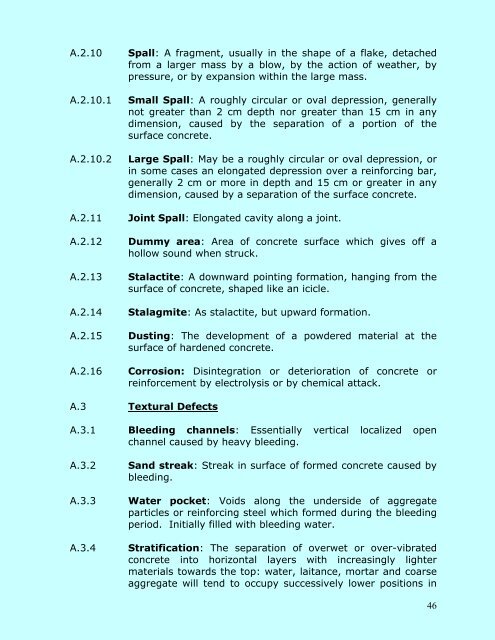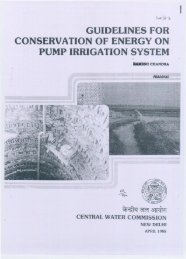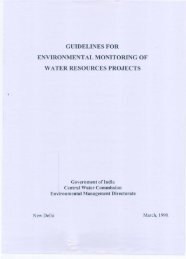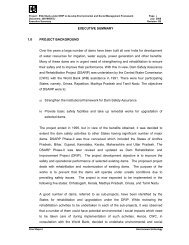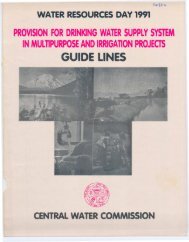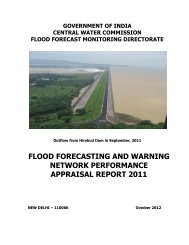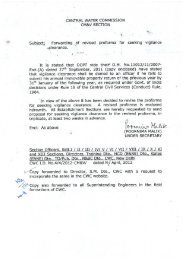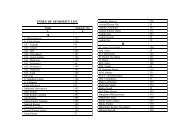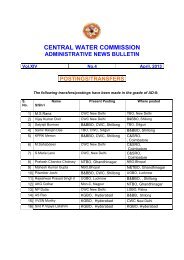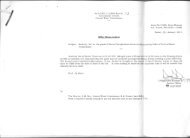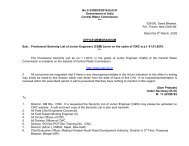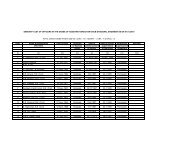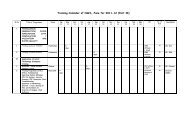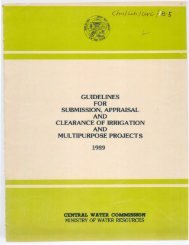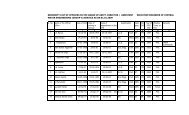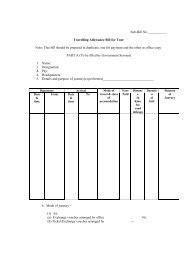Guidelines for Safety Inspection of Dams - Central Water Commission
Guidelines for Safety Inspection of Dams - Central Water Commission
Guidelines for Safety Inspection of Dams - Central Water Commission
Create successful ePaper yourself
Turn your PDF publications into a flip-book with our unique Google optimized e-Paper software.
A.2.10 Spall: A fragment, usually in the shape <strong>of</strong> a flake, detached<br />
from a larger mass by a blow, by the action <strong>of</strong> weather, by<br />
pressure, or by expansion within the large mass.<br />
A.2.10.1 Small Spall: A roughly circular or oval depression, generally<br />
not greater than 2 cm depth nor greater than 15 cm in any<br />
dimension, caused by the separation <strong>of</strong> a portion <strong>of</strong> the<br />
surface concrete.<br />
A.2.10.2 Large Spall: May be a roughly circular or oval depression, or<br />
in some cases an elongated depression over a rein<strong>for</strong>cing bar,<br />
generally 2 cm or more in depth and 15 cm or greater in any<br />
dimension, caused by a separation <strong>of</strong> the surface concrete.<br />
A.2.11 Joint Spall: Elongated cavity along a joint.<br />
A.2.12 Dummy area: Area <strong>of</strong> concrete surface which gives <strong>of</strong>f a<br />
hollow sound when struck.<br />
A.2.13 Stalactite: A downward pointing <strong>for</strong>mation, hanging from the<br />
surface <strong>of</strong> concrete, shaped like an icicle.<br />
A.2.14 Stalagmite: As stalactite, but upward <strong>for</strong>mation.<br />
A.2.15 Dusting: The development <strong>of</strong> a powdered material at the<br />
surface <strong>of</strong> hardened concrete.<br />
A.2.16 Corrosion: Disintegration or deterioration <strong>of</strong> concrete or<br />
rein<strong>for</strong>cement by electrolysis or by chemical attack.<br />
A.3 Textural Defects<br />
A.3.1 Bleeding channels: Essentially vertical localized open<br />
channel caused by heavy bleeding.<br />
A.3.2 Sand streak: Streak in surface <strong>of</strong> <strong>for</strong>med concrete caused by<br />
bleeding.<br />
A.3.3 <strong>Water</strong> pocket: Voids along the underside <strong>of</strong> aggregate<br />
particles or rein<strong>for</strong>cing steel which <strong>for</strong>med during the bleeding<br />
period. Initially filled with bleeding water.<br />
A.3.4 Stratification: The separation <strong>of</strong> overwet or over-vibrated<br />
concrete into horizontal layers with increasingly lighter<br />
materials towards the top: water, laitance, mortar and coarse<br />
aggregate will tend to occupy successively lower positions in<br />
46


